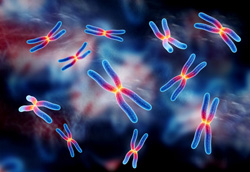Modules encourage 'survival of the fittest'
The human body is incredibly complicated. At every level, structures and functions have developed side by side, each maintaining their independence yet able to coordinate with other units. Evidence for modularity is mounting and stretches across genes, functions and structures. Different proteins, for example, have a common structure. However, each type of protein has extra building blocks so different molecules can have a specific function. As far as evolution is concerned, modularity allows changes in one structure to occur without disturbing other units. This type of organisation would also make it easier for other combinations of modules to evolve. The appropriately named Modular networks project looked into just one of the aspects of modularity – genes that regulate developmental processes. With the help of EU funding, the scientists investigated how modularity can occur and facilitate the development of particular gene activity patterns. The researchers ran computer simulations of the evolution of gene regulatory networks. They then analysed many thousands of gene circuits to investigate how different structural features can crop up, especially when an organism is able to change its physical appearance, or phenotype, when environmental changes occur. Their results provide explanations for how living beings acquire a standardised unit-based organisation. Furthermore, they show how modularity facilitates the evolution of new functions through the combination of modules. The research of the Modular networks team has far-reaching significance in evolutionary studies. Not only does it explain how living beings can operate with a modular arrangement, but it also shows how they can adapt to a changing environment. Moreover, it can shed new light on developmental systems and help explain why they are so intricate.



